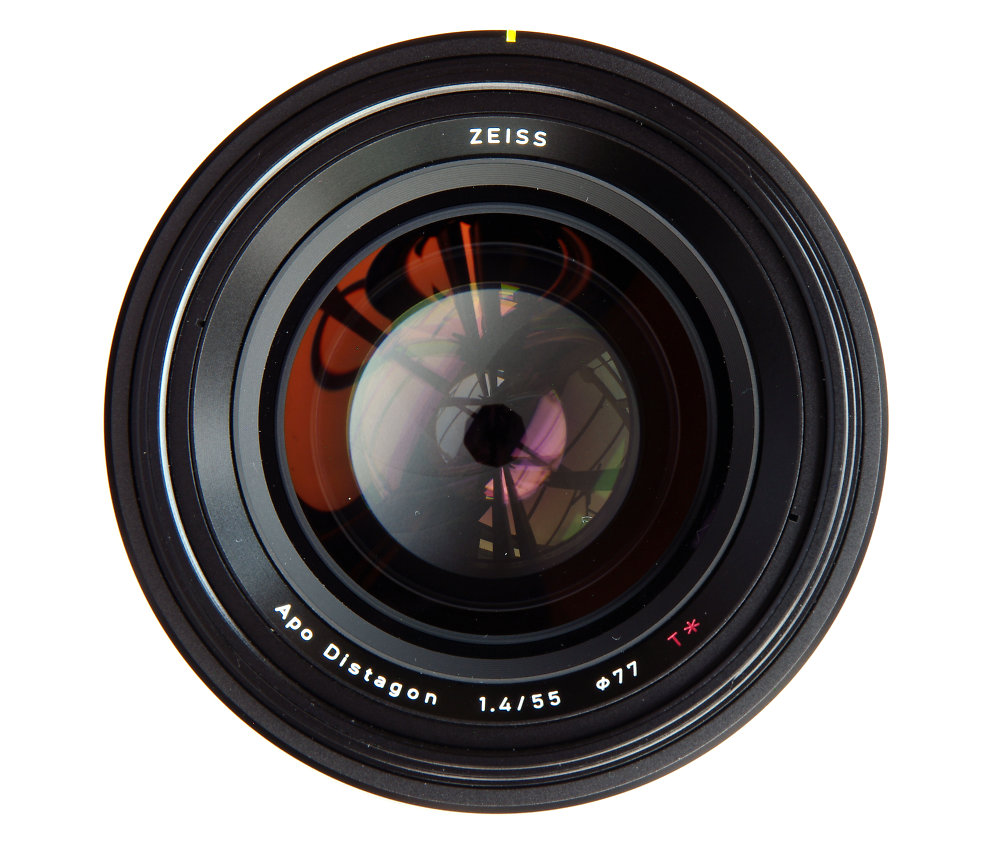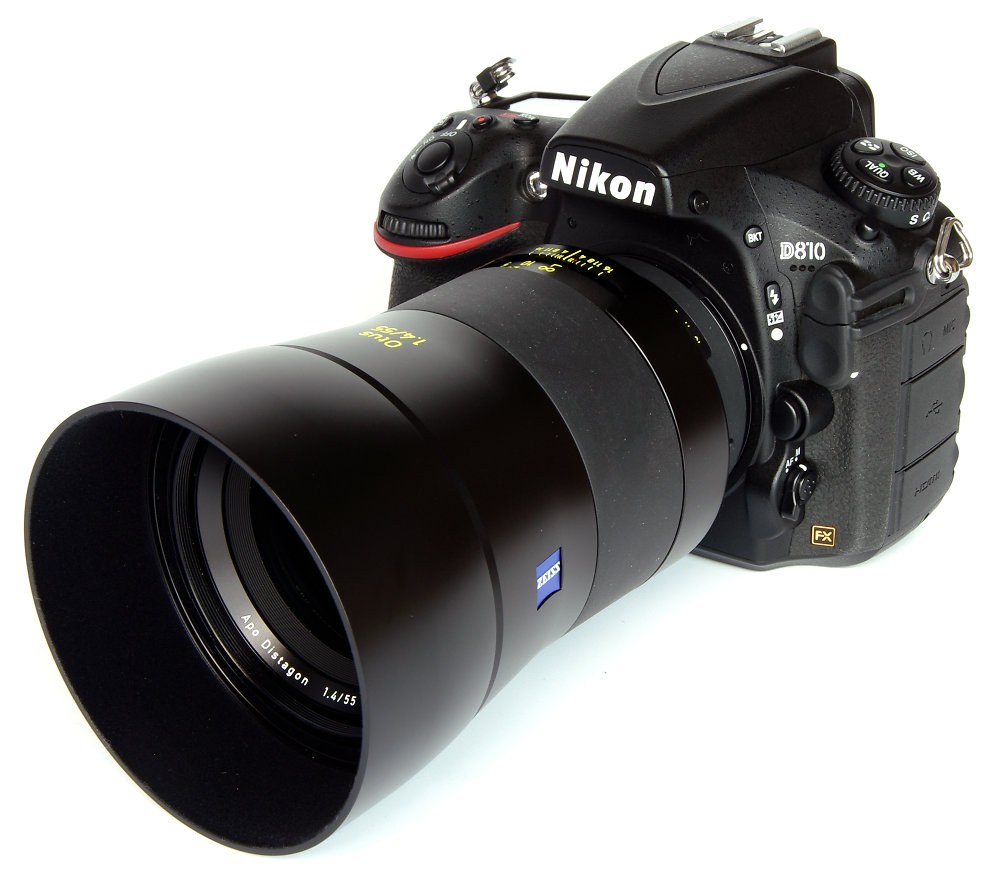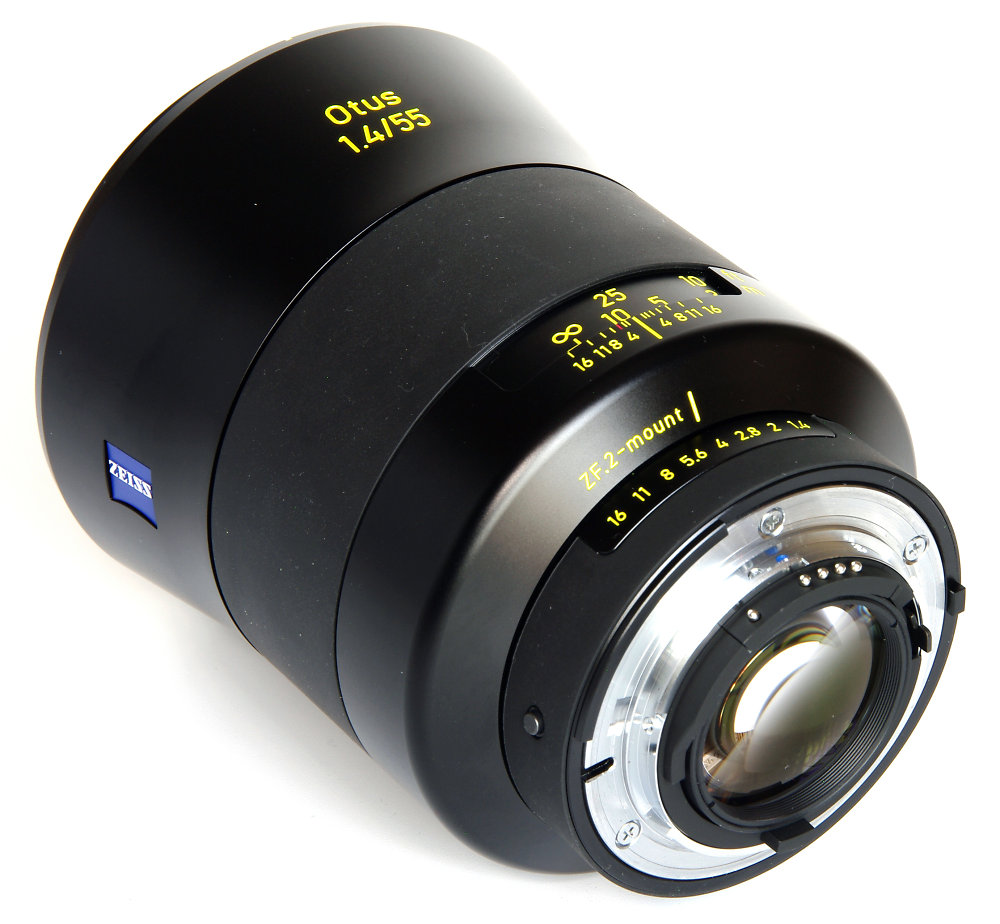Zeiss OTUS 55mm f/1.4 Lens Review
Zeiss OTUS 55mm f/1.4 Handling and Features
The first impression of this lens is that it is large, heavy and gorgeous. The finish is exemplary, the controls silky smooth and the metal lens hood clips into place with absolute precision. The impression that lingers is that feeling of beautiful engineering, but the offset is a very large and heavy optic, weighing in at 970g in Nikon (ZF.2) mount and 1030g in Canon (ZE) mount. The version reviewed is in ZF.2 mount for Nikon, using the Nikon D810 body.
The lens is as minimalistic as the instruction manual, the latter telling us very little as regards specification and just the bare bones of handling. For more information, we have to refer to the Zeiss website. It is a design though that clearly has class, a solid and satisfying sense that conveys quality in manufacture, just like its 28mm f/1.4 sibling previously tested. Compared to the norm for 50mm or 55mm standard lenses, under the skin this is a highly complex optic.
The optical formula is 12 elements in 10 groups. There are five aspheric elements and six elements are made with anomalous partial dispersion glass. The construction is completed by floating elements, used to maintain quality at closer focusing distances. All of this results in an apochromatic lens based upon the Distagon retrofocus design. Apochromatic lenses are designed to give full correction for three colours of light - red, green and blue, focusing all at the same point to avoid colour fringing.
Lens controls are sparse, consisting of a focusing ring and aperture ring. The aperture ring has a locking stop at f/16 for auto functions, depending on the camera, or offers the usual aperture options with click stops at half stop intervals. The exception is between f/11 and f/16, which is a full stop only. This aperture ring is very nicely engineered, firm but easy to use and just light enough in action. Filter size is 77mm.
We are offered manual focusing only and this is adjusted with a comfortable and reasonably wide rubberised ring that is silent in operation. There is no lens extension as we focus closer as the lens employs internal focusing. There is a cut out for the distance scale, boldly marked in feet and metres. There is also a depth of field scale and an infra-red focusing mark, all very traditional for a manual focus lens. Focusing is down to 0.5m (19.68 inches) from the sensor plane. It must be said though that manually focusing accurately does take some attention. If the camera's focusing screen is to be used then it may well be that the standard AF screen is unsuitable. Certainly with the Nikon D810 manual focusing is very difficult and using Live View is much more effective. This is the only real difficultly with the lens, and focusing well does reap benefits. When it's right, as we shall see, it is spectacular.
Add your message
Please login here or if you've not registered, you can register here. Registering is safe, quick and free.
photodo Stats
428 MTF tests
74 in-depth photodo reviews
100+ users join each day
Help the lens community by reviewing or rating a lens today via our lens search
Latest Lens Reviews
- Chinon 28mm f/2.8 Vintage Lens Review
- Canon EF 70-200mm f/4L IS II USM Lens Review
- Samyang AF 85mm f/1.4 EF Review
- Sigma 70mm f/2.8 DG Macro Art Review
- Samyang AF 24mm f/2.8 FE Review
- Meike 50mm f/1.7 Review
- Tamron 70-210mm f/4 Di VC USD Review
- Lensbaby Burnside 35mm f/2.8 Review
- Asahi Super Takumar 50mm f/1.4 Review
- Asahi Super-Multi-Coated Takumar 135mm f/3.5 Review



